【C语言】迷宫问题
【C语言】迷宫问题
- 一. 题目描述
- 二. 思想
- 2.1 算法---回溯算法
- 2.2 思路分析+图解
- 三. 代码实现
- 3.1 二维数组的实现
- 3.2 上下左右四个方向的判断
- 3.4 用栈记录坐标的实现
- 3.5 完整代码
- 四. 总结
一. 题目描述
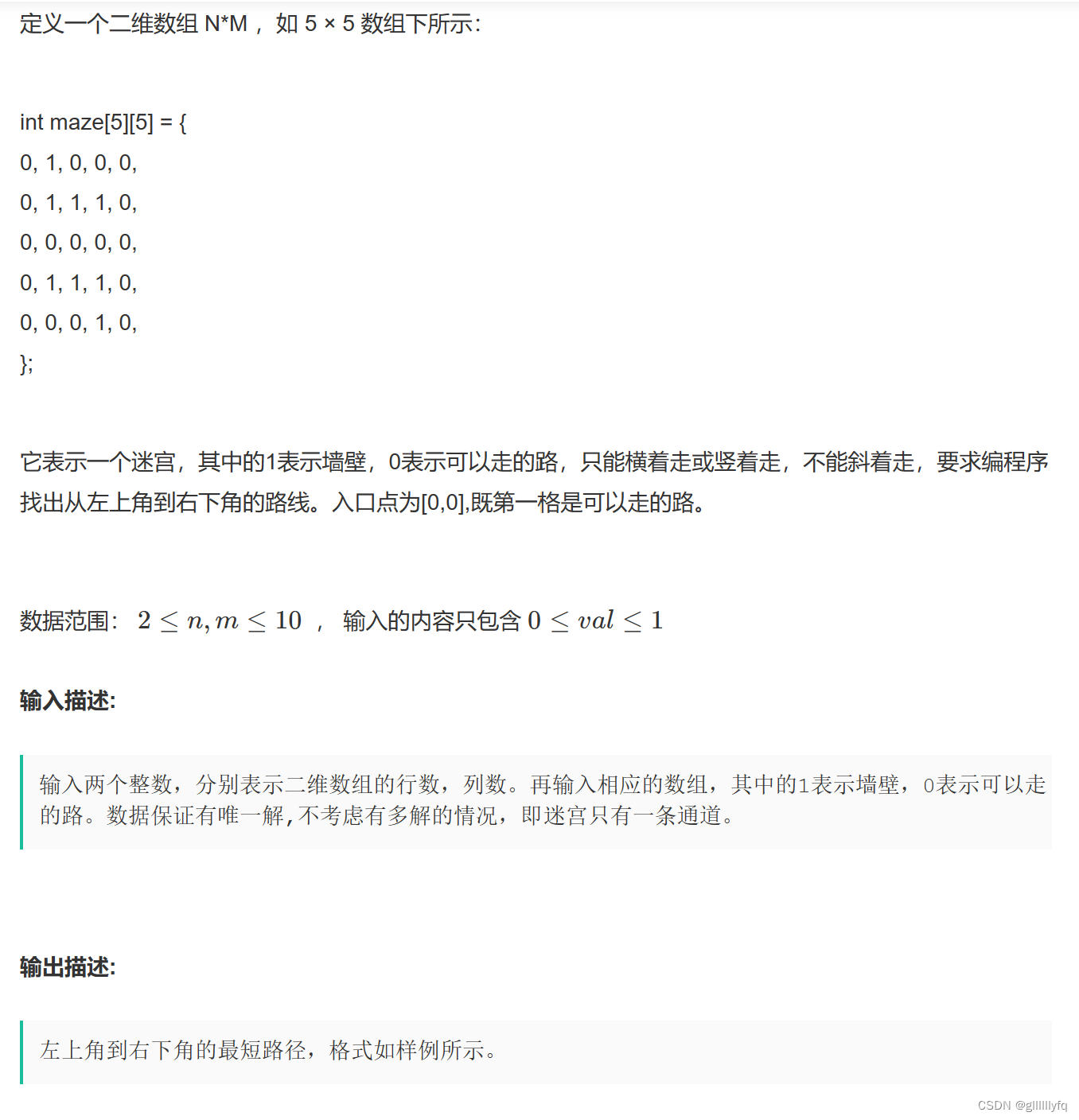
牛客网链接:https://www.nowcoder.com/questionTerminal/cf24906056f4488c9ddb132f317e03bc
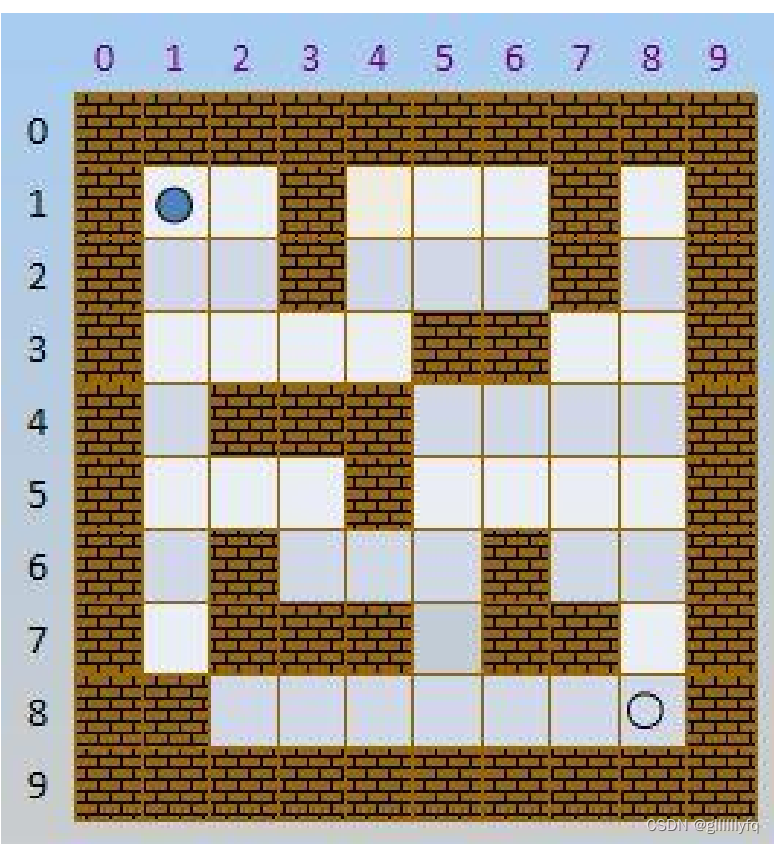
二. 思想
2.1 算法—回溯算法
-
回溯算法实际上一个类似枚举的搜索尝试过程,主要是在搜索尝试过程中寻找问题的解,当发现已不满足求解条件时,就“回溯”返回,尝试别的路径。
-
回溯法是一种选优搜索法,按选优条件向前搜索,以达到目标。但当探索到某一步时,发现原先选择并不优或达不到目标,就退回一步重新选择,这种走不通就退回再走的技术为回溯法,而满足回溯条件的某个状态的点称为“回溯点”。
-
许多复杂的,规模较大的问题都可以使用回溯法,有“通用解题方法”的美称。(深度优先遍历,能走则走,不能走则退)
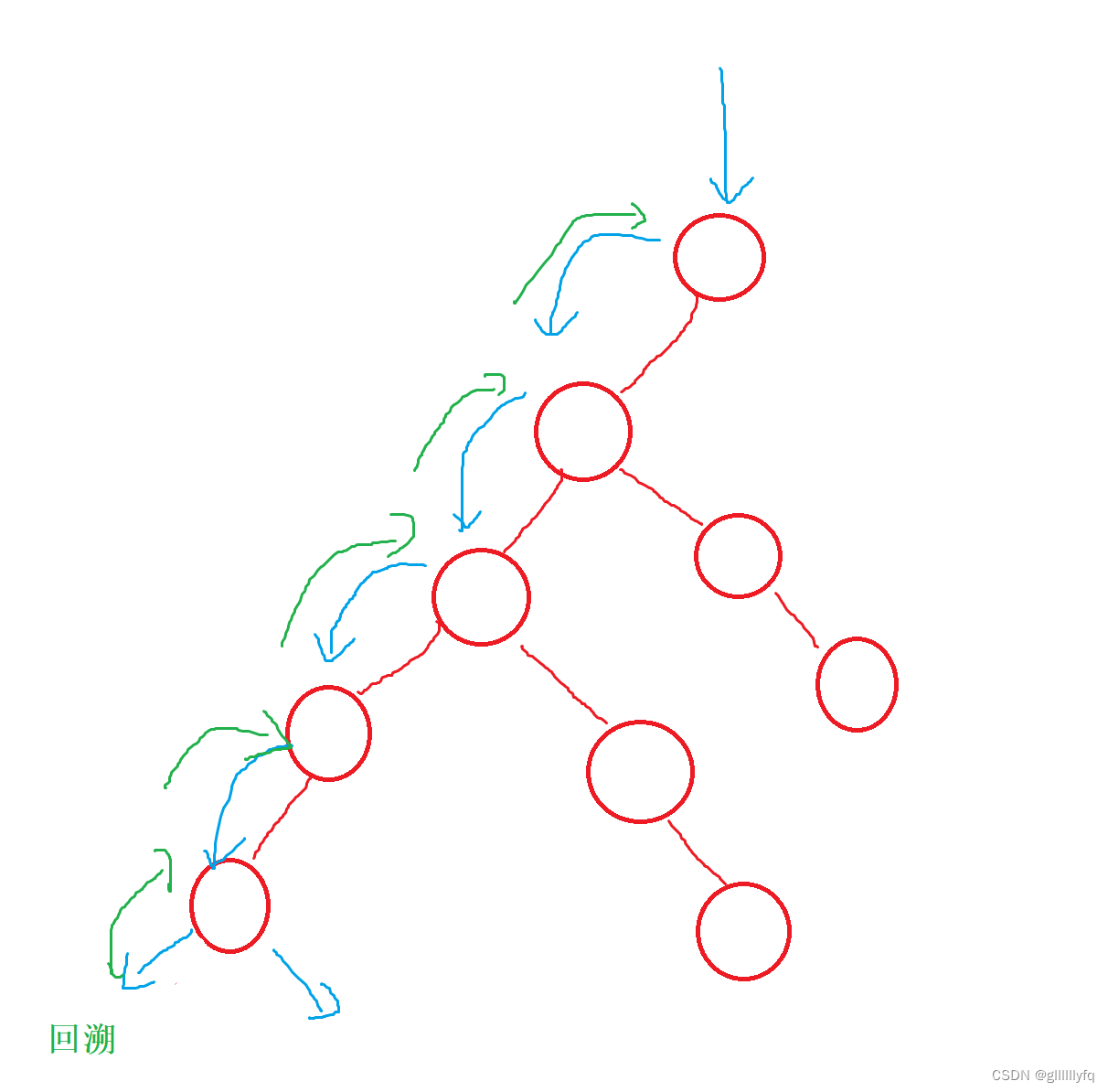
2.2 思路分析+图解
对于不支持变长数组的C版本来说,如果需要实现二维变长数组的话,就需要动态开辟二维数组。
每次需要对上下左右四个方向进行判断(但是四个方向选择的先后顺序不是很重要,每个迷宫不一样),才能到达下一个坐标,并且如果四个方向都不能走而且还没到达终点,那么就要往回走。
为了判断往回是否还有其它能走的方向,我们需要对走过的坐标进行标记(已走过的坐标,用数字 2 标记),这样就不会出现走重复的路线。
在结束的时候,我们需要打印这条路径的每个坐标,那么我们就需要对我们走过的坐标进行储存,对到达不了终点的路上的坐标消除,所以似乎需要栈来帮我们储存这个坐标。
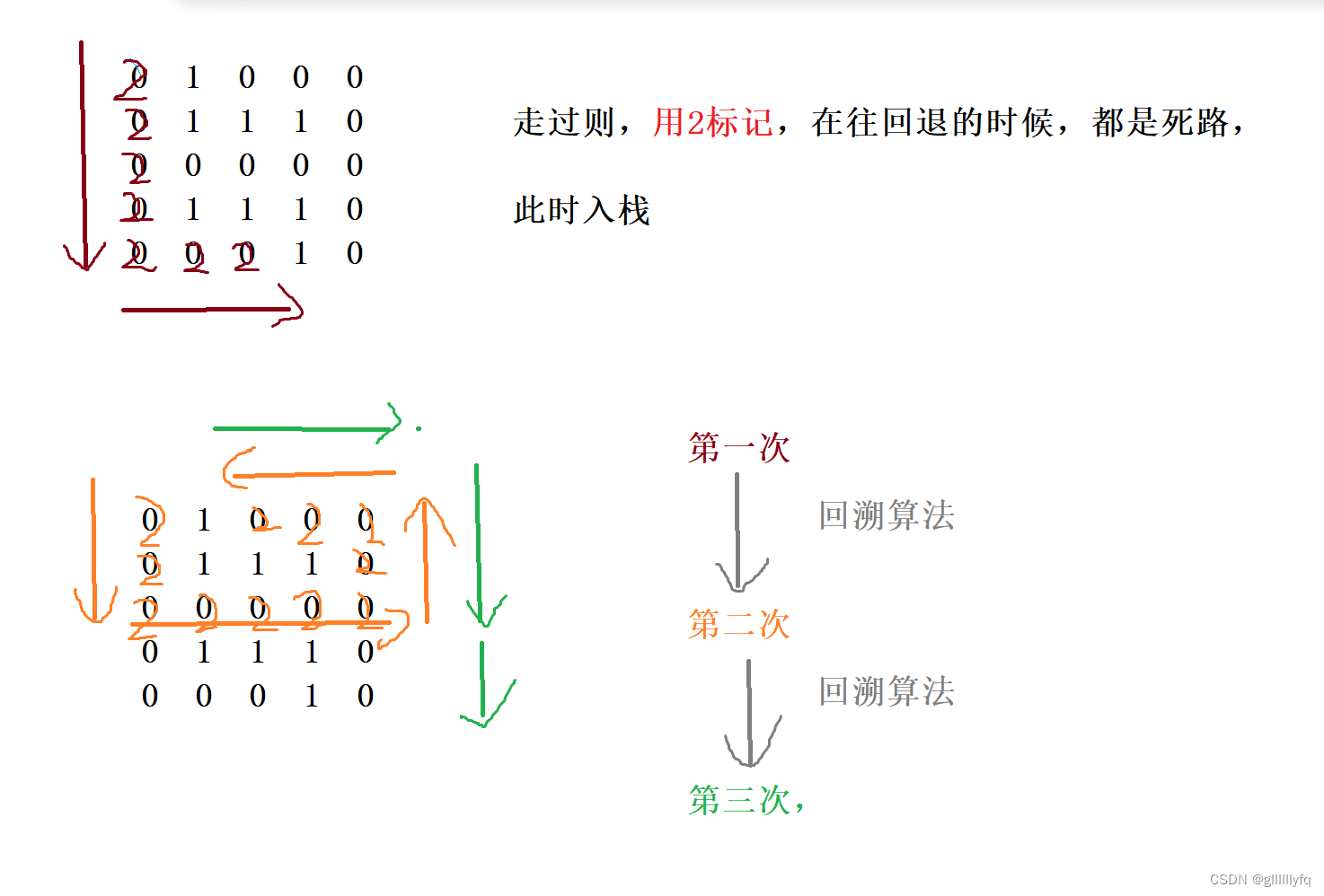
三. 代码实现
3.1 二维数组的实现
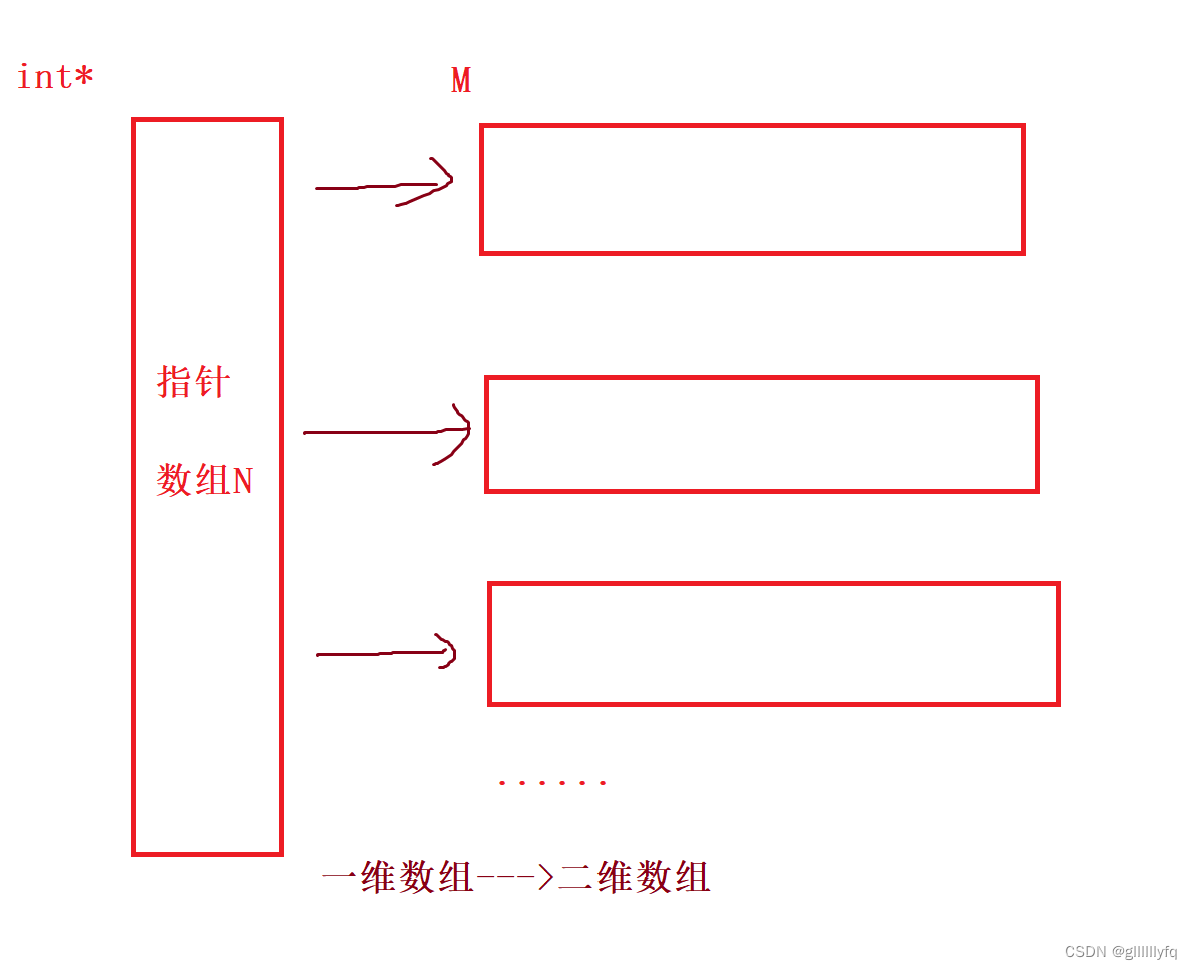
void PrintMase(int** mase, int N, int M)
{
for (int i = 0;i < N;i++)//先确定行---一维数组
{
for (int j = 0;j < M;j++)
{
printf("%d ", mase[i][j]);
}
printf("\n");
}
}
3.2 上下左右四个方向的判断
-
从(0,0)坐标开始,假设先判断上下,再判断左右,如果能通过就移动坐标,并且进入下次判断,直到到达终点,或者不能移动,并且需要对每次到达的坐标进行标记,假设标记为2。
-
如果四个方向都不能走,并且没到达终点,那么将一直返回上一个位置,直到有其它方向能走。
-
如果到达终点,返回true,直到跳出所有递归。
bool GetMasePath(int** maze, int N, int M)
{
StackPush(&path, cur);//cur表示当前坐标
if (cur.row == N - 1 && cur.col == M - 1)//当前坐标为右下时,走出迷宫
{
return true;
}
//走过的标志为2
PT next;
maze[cur, row][cur.col] == 2;
//上
next = cur;
next.row -= 1;//行减1
if (IsPass(mzse, N, M, next))
{
if (GetMasePath(maze, N, M, next))
{
return true;
}
}
//下
next = cur;
next.row += 1;//行加1
if (IsPass(mzse, N, M, next))
{
if (GetMasePath(maze, N, M, next))
{
return true;
}
}
//左
next = cur;
next.col -= 1;//列减1
if (IsPass(mzse, N, M, next))
{
if (GetMasePath(maze, N, M, next))
{
return true;
}
}
//右
next = cur;
next.col += 1;//列加1
if (IsPass(mzse, N, M, next))
{
if (GetMasePath(maze, N, M, next))
{
return true;
}
}
}
3.4 用栈记录坐标的实现
由于C语言没有自己的栈,所以要自己搭建一个栈。
每次判断坐标前,先将当前坐标存入栈中,如果四个方向都不能走的时候,再出栈。
当到达终点,返回完后,对栈中数据进行处理。
因为栈中数据打印后与题目要求的打印相反,所有需要再创建一个栈,将当前栈中的数据导入另一个栈中,从而实现相反的打印。
为什么要建立两个栈?
因为题目要求的打印路径顺序是有先后的,只有一个栈是,路径坐标是倒的,与题目要求相反;所以建立两个栈,使得坐标顺序不变
typedef PT STDataType;
typedef struct Stack
{
STDataType* a;
int top;
int capacity;//空间
}ST;
void StackInit(ST* ps);
void StackDestory(ST* ps);
void StackPush(ST* ps, STDataType x);//入栈
void StackPop(ST* ps);//出栈
STDataType StackTop(ST* ps);//返回栈顶元素
int StackSize(ST* ps);//栈大小
bool StackEmpty(ST* ps);//bool 判断是否栈空,栈空为1
//初始化
void StackInit(ST* ps)
{
assert(ps);
ps->a = (STDataType*)malloc(sizeof(STDataType) * 4);//初次分配
if (ps->a == NULL)
{
printf("malloc fail\n");
exit(-1);
}
ps->capacity = 4;
ps->top = 0;
}
//销毁栈
void StackDestory(ST* ps)
{
assert(ps);
free(ps->a);
ps->a = NULL;
ps->top = ps->capacity = 0;
}
//入栈
void StackPush(ST* ps, STDataType x)
{
assert(ps);
if (ps->top == ps->capacity)
{
STDataType* tmp = (STDataType)realloc(ps->a, ps->capacity);//再分配
if (tmp == NULL)
{
printf("realloc fail\n");
exit(-1);//为假,退出
}
else
{
ps->a = tmp;
ps->capacity *= 2;
}
}
ps->a[ps->top] = x;
ps->top++;
}
//出栈
void StackPop(ST* ps)
{
assert(ps);
assert(ps->top > 0);
ps->top--;
}
//返回栈顶
STDataType StackTop(ST* ps)
{
assert(ps);
assert(ps->top > 0);
{
return ps->a[ps->top - 1];
}
}
//栈大小
int StackSize(ST* ps)
{
assert(ps);
return ps->top;
}
//判断栈空
bool StackEmpty(ST* ps)
{
assert(ps);
return ps->top == 0;
}
Stack path;
/
//打印迷宫
void PrintMase(int** mase, int N, int M)
{
for (int i = 0;i < N;i++)//先确定行---一维数组
{
for (int j = 0;j < M;j++)
{
printf("%d ", mase[i][j]);
}
printf("\n");
}
}
//输出栈中坐标路径
void PrintPath(Stack* ps)
{
//把path数据倒置入rPath
Stack rPath;
StackInit(&rPath);
while (!StackEmpty(&Path)
{
StackPush(&rPath, StackTop(&Path));
StackPop(&path)
}
while (!StackEmpty(&rPath)
{
PT top = StackTop(&rPath);
printf("(%d , %d)\n", top.row, top.col);
StackPop(&rpath)
}
}
//判读路径是否正确
bool IsPass(int** maze, int N, int M)
{
if (pos.row >= 0 && pos.row < N && pos.col >= 0
&& pos.col < M
&& masz[pos.row][pos.col] == 0)
{
return true;
}
else
{
return false;
}
}
3.5 完整代码
#include<stdio.h>
#include<assert.h>
#include<stdlib.h>
typedef struct Postion
{
int row;
int col;
}PT;
//
typedef PT STDataType;
typedef struct Stack
{
STDataType* a;
int top;
int capacity;//空间
}ST;
void StackInit(ST* ps);
void StackDestory(ST* ps);
void StackPush(ST* ps, STDataType x);//入栈
void StackPop(ST* ps);//出栈
STDataType StackTop(ST* ps);//返回栈顶元素
int StackSize(ST* ps);//栈大小
bool StackEmpty(ST* ps);//bool 判断是否栈空,栈空为1
//初始化
void StackInit(ST* ps)
{
assert(ps);
ps->a = (STDataType*)malloc(sizeof(STDataType) * 4);//初次分配
if (ps->a == NULL)
{
printf("malloc fail\n");
exit(-1);
}
ps->capacity = 4;
ps->top = 0;
}
//销毁栈
void StackDestory(ST* ps)
{
assert(ps);
free(ps->a);
ps->a = NULL;
ps->top = ps->capacity = 0;
}
//入栈
void StackPush(ST* ps, STDataType x)
{
assert(ps);
if (ps->top == ps->capacity)
{
STDataType* tmp = (STDataType)realloc(ps->a, ps->capacity);//再分配
if (tmp == NULL)
{
printf("realloc fail\n");
exit(-1);//为假,退出
}
else
{
ps->a = tmp;
ps->capacity *= 2;
}
}
ps->a[ps->top] = x;
ps->top++;
}
//出栈
void StackPop(ST* ps)
{
assert(ps);
assert(ps->top > 0);
ps->top--;
}
//返回栈顶
STDataType StackTop(ST* ps)
{
assert(ps);
assert(ps->top > 0);
{
return ps->a[ps->top - 1];
}
}
//栈大小
int StackSize(ST* ps)
{
assert(ps);
return ps->top;
}
//判断栈空
bool StackEmpty(ST* ps)
{
assert(ps);
return ps->top == 0;
}
Stack path;
/
//打印迷宫
void PrintMase(int** mase, int N, int M)
{
for (int i = 0;i < N;i++)//先确定行---一维数组
{
for (int j = 0;j < M;j++)
{
printf("%d ", mase[i][j]);
}
printf("\n");
}
}
//输出栈中坐标路径
void PrintPath(Stack* ps)
{
//把path数据倒置入rPath
Stack rPath;
StackInit(&rPath);
while (!StackEmpty(&Path)
{
StackPush(&rPath, StackTop(&Path));
StackPop(&path)
}
while (!StackEmpty(&rPath)
{
PT top = StackTop(&rPath);
printf("(%d , %d)\n", top.row, top.col);
StackPop(&rpath)
}
}
//判读路径是否正确
bool IsPass(int** maze, int N, int M)
{
if (pos.row >= 0 && pos.row < N && pos.col >= 0
&& pos.col < M
&& masz[pos.row][pos.col] == 0)
{
return true;
}
else
{
return false;
}
}
//上下左右遍历
bool GetMasePath(int** maze, int N, int M)
{
StackPush(&path, cur);//cur表示当前坐标
if (cur.row == N - 1 && cur.col == M - 1)//当前坐标为右下时,走出迷宫
{
return true;
}
//走过的标志为2
PT next;
maze[cur, row][cur.col] == 2;
//上
next = cur;
next.row -= 1;//行减1
if (IsPass(mzse, N, M, next))
{
if (GetMasePath(maze, N, M, next))
{
return true;
}
}
//下
next = cur;
next.row += 1;//行加1
if (IsPass(mzse, N, M, next))
{
if (GetMasePath(maze, N, M, next))
{
return true;
}
}
//左
next = cur;
next.col -= 1;//列减1
if (IsPass(mzse, N, M, next))
{
if (GetMasePath(maze, N, M, next))
{
return true;
}
}
//右
next = cur;
next.col += 1;//列加1
if (IsPass(mzse, N, M, next))
{
if (GetMasePath(maze, N, M, next))
{
return true;
}
}
}
int main()
{
int N = 0, M = 0;
while (scanf("%d%d", &N, &M) != EOF)
{
// int a[n][m]; // vs2013 不支持
// 动态开辟二维数组
int** maze = (int**)malloc(sizeof(int*) * N);
for (int i = 0; i < N; ++i)
{
maze[i] = (int*)malloc(sizeof(int) * M);
}
// 二维数组得输入
for (int i = 0; i < N; ++i)
{
for (int j = 0; j < M; ++j)
{
scanf("%d", &maze[i][j]);
}
}
StackInit(&path);
// PrintMaze(maze, N, M);
PT entry = { 0, 0 };
if (GetMazePath(maze, N, M, entry))
{
//printf("找到通路\n");
PirntPath(&path);
}
else
{
printf("没有找到通路\n");
}
StackDestory(&path);
for (int i = 0; i < N; ++i)
{
free(maze[i]);
}
free(maze);
maze = NULL;
}
return 0;
}
四. 总结
迷宫问题的难点:
- 建立两个栈,使得打印的顺序是正确的
- 怎么找路径,标记已经走过的坐标
- 栈的应用
- 递归
- 回溯算法
感谢阅读!
